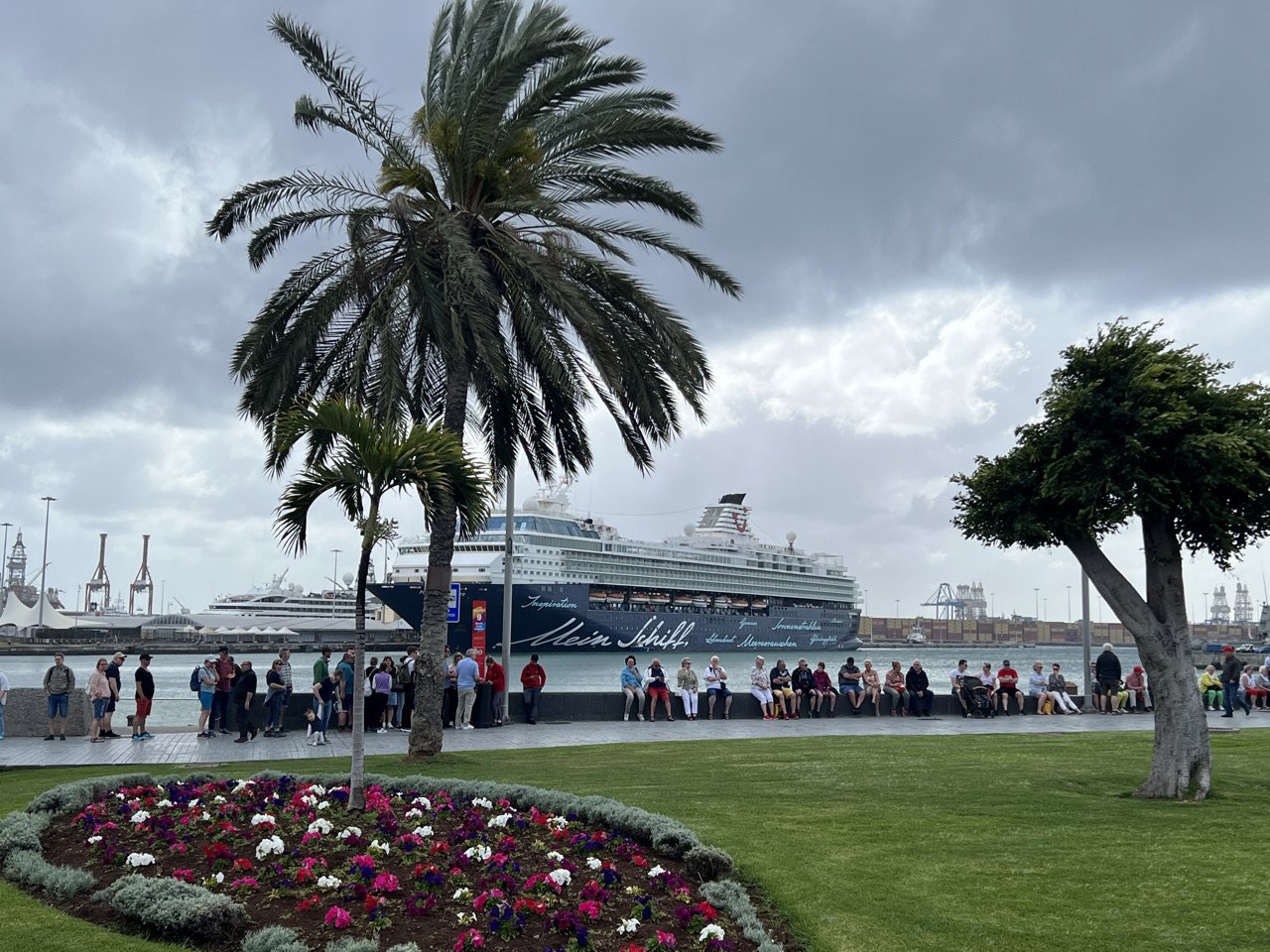Day 557 - Las Palmas de Gran Canaria, Spain
Transatlantic Voyage - Day 18
After the red and black tugs haul us into the port of Las Palmas, the largest city in the Canary Islands (100,000 people), we find a city alive with long rows of tall hotels and apartment buildings gleaming in the morning sun.
This is the first time we’ve planted our seagoing feet on solid ground since Montevideo. We have half a day. Not much time, while the ship replenishes its stores. Everyone, including members of the crew, are excited to visit.
Rain had been predicted for our arrival, but skies are clear and a balmy 68 as we head off the gangplank. Cyn and I wander into the main town across from the long broad harbor. The town is spotless, every tile along the sidewalks are securely in place among the colorful, pristine streets. The district bustles with shoppers, workers, mothers, children, all going briskly about their business.
Las Palmas is a tourist town and there is little evidence of poverty, at least where we walk. The narrow streets are clogged with Porsches, Mercedes, and BMWs. It's a favorite island to visit from Spain, Germany, England and France, thanks to its temperate climate and broad beaches. You can depart the rains of a London winter and find sunny beaches, hotels, and every kind of food in just a couple of hours short flight.
We explore a long pedestrian walkway lined with stately trees, restaurants, sports stores, and upscale shops, showing off of Louis Vuitton purses, Prada shoes, and Rolex watches.
A roundabout bookends the long pedestrian mall where a monument to "Primitivas Canarias" await our inspection. The sculpture was created in 1977 by Luis Alemán Montull. The carved men haul ropes of something heavy. There is a women holding a clay pot, and a mother clutching an infant. The words on the plaque read in Spanish, "This is part of our heritage." The primativas do not look happy. Their stone bodies speak dejection and pain despite their physical strength.
The heritage of the primativas was indeed a sad story. When the Spanish arrived on the island, they spent five years destroying the aboriginal people in the same way the conquistadors would later after they reached the other side of the Atlantic.
Annihilation seemed to be the preference of the Catholic king and queen of Spain at the time: Ferdinand and Isabella. Those were the days when the Moors lost their last Andalusian stand at the Alhambra in Granada, Spain; when the monarchs initiated the Inquisition that destroyed Spain's jews, and funded a certain Italian navigator named Christopher Columbus who wanted to find India's spice islands by heading west rather than east.
Las Palmas is a common waystation for mariners that goes back 500 hundreds of years. Columbus himself repaired the rudder of the Pinta here, one of the three ships that took him on his first voyage to the New World. Magellan anchored here before beginning the world’s first voyage around the planet. The island remains part of Spain and the EU and it’s ships are all abustle as we depart the large port after re-embarking the L’Austral, still 700 miles from Port Lisbon.
By late afternoon, the black tugs reappear and the ship heads Northeast to Europe.







